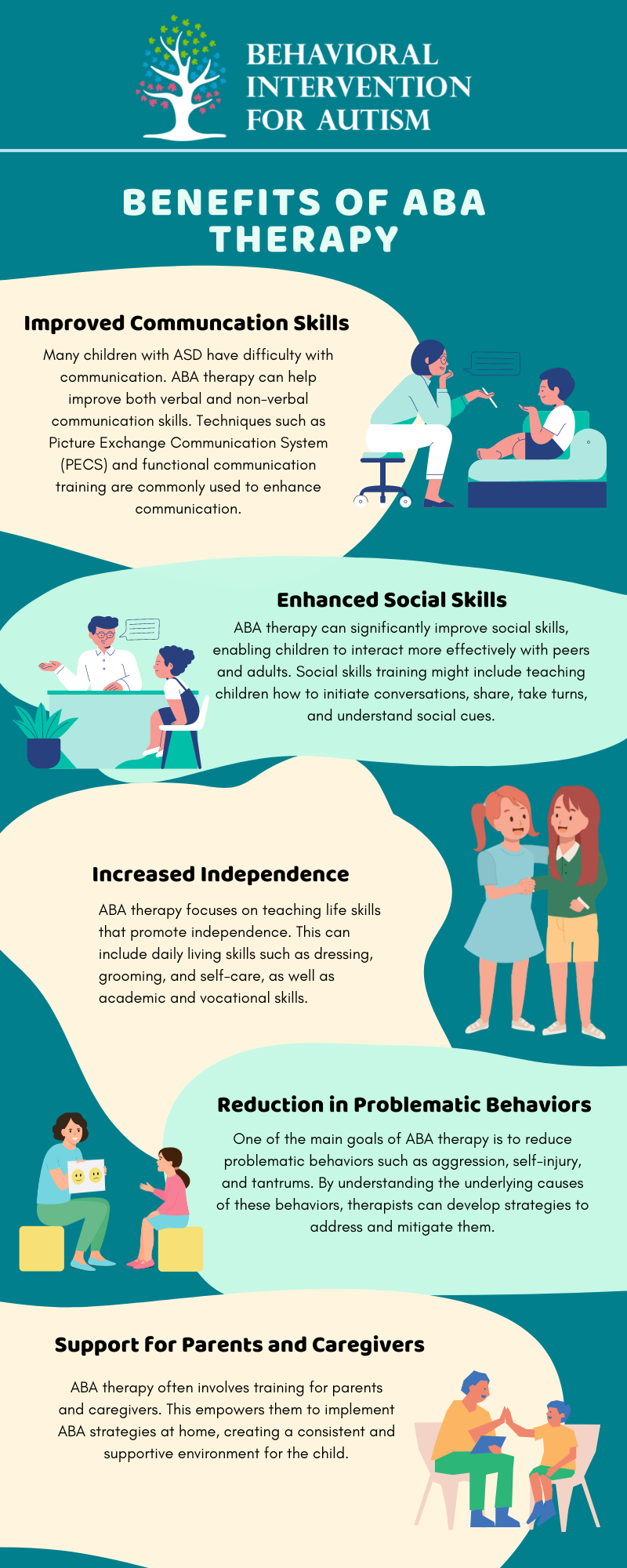
Table of Contents
Applied Behavior Analysis (ABA) therapy has become a widely recognized and effective approach to supporting individuals with Autism Spectrum Disorder (ASD) and other developmental conditions. As a parent, understanding what ABA therapy entails and how it can benefit your child is crucial. This guide aims to demystify ABA therapy, providing you with the knowledge to make informed decisions about your child’s treatment plan.
What is ABA Therapy?
ABA therapy is a scientific approach to understanding and changing behavior. It focuses on how behaviors are learned and how they can be altered through various techniques. The primary goal of ABA therapy is to increase positive behaviors and decrease harmful behaviors. This is achieved by understanding the relationship between an individual’s environment and their behavior, and then systematically applying interventions to modify behavior.
Core Principles of ABA Therapy
These are the core principles of ABA therapy, factors that are essential for understanding and effectively modifying behavior to support the unique needs of each child:
Behavior Analysis
Behavior analysis is the foundation of ABA therapy. It involves observing and measuring behavior to understand its causes and effects. This process helps therapists identify what triggers certain behaviors and what reinforces them.
Positive Reinforcement
One of the key principles of ABA therapy is positive reinforcement. This involves providing a reward or incentive for desirable behavior, which increases the likelihood that the behavior will be repeated. For example, a child may receive praise or a favorite toy for completing a task.
Individualized Programs
ABA therapy is highly individualized. Each program is tailored to meet the unique needs of the child. Therapists develop personalized plans based on the child’s specific strengths, weaknesses, and goals.
Data-Driven Approach
ABA therapy relies heavily on data collection and analysis. Therapists continuously monitor the child’s progress and adjust interventions based on empirical evidence. This ensures that the therapy is effective and responsive to the child’s evolving needs.
How ABA Therapy Works
This is how ABA therapists start their processes with a client:
Step 1: Assessment
The first step in ABA therapy is a thorough assessment. This involves gathering information about the child’s behavior, skills, and challenges. Therapists may use various assessment tools, interviews with parents, and direct observation to create a comprehensive profile of the child.
Step 2: Goal Setting
Based on the assessment, therapists set specific, measurable goals for the child. These goals can range from improving communication skills to reducing tantrums or self-injurious behaviors. Goals are broken down into smaller, manageable steps to facilitate progress.
Step 3: Intervention
Intervention is the core of ABA therapy. Therapists use a variety of techniques to teach new skills and modify behavior. Some common interventions include:
- Discrete Trial Training (DTT): This technique is where skills are broken down into small, teachable components. Every component is taught individually, and the child is given repeated opportunities to practice and master each skill.
- Natural Environment Teaching (NET): This approach involves teaching skills in the natural environment where they are typically used. For example, teaching communication skills during playtime or social interactions.
- Pivotal Response Training (PRT): PRT focuses on improving pivotal areas of a child’s development, such as motivation and response to multiple cues, which can have a broad impact on other areas of behavior.
Step 4: Generalization and Maintenance
Generalization involves transferring skills learned in therapy to different settings, such as home or school. Maintenance ensures that the skills are retained over time. Therapists work closely with parents and caregivers to reinforce these skills outside of therapy sessions.
Step 5: Progress Monitoring
Continuous progress monitoring is essential in ABA therapy. Therapists collect data on the child’s behavior and skill acquisition, analyzing trends and making necessary adjustments to the treatment plan. This data-driven approach ensures that the therapy remains effective and aligned with the child’s needs.
Benefits of ABA Therapy
For parents who are interested in choosing ABA therapy, these are some of the advantages that you can get:
Choosing an ABA Provider
When choosing an ABA provider, it’s important to consider their credentials and experience. Look for Board Certified Behavior Analysts (BCBAs) who have the necessary training and expertise to provide high-quality therapy. Additionally, ensure that the provider offers individualized treatment plans tailored to your child’s specific needs, avoiding those who use a one-size-fits-all approach.
Effective ABA therapy involves collaboration between therapists, parents, and other professionals involved in the child’s care, so choose a provider who values open communication and is willing to work closely with you. Lastly, Ethical considerations are paramount in ABA therapy, so ensure that the provider adheres to the guidelines set forth by the Behavior Analyst Certification Board (BACB), which includes obtaining informed consent, ensuring confidentiality, and prioritizing the child’s best interests.
Possible Challenges
The therapy is often intensive, requiring many hours each week, which can be difficult for families to manage and may raise concerns about the child’s well-being. Additionally, the cost of ABA therapy can be significant, with varying insurance coverage, potentially creating financial barriers for some families seeking high-quality services.
Conclusion
ABA therapy offers a structured and scientifically supported approach to helping children with ASD and other developmental conditions achieve their full potential. By understanding the principles, processes, and benefits of ABA therapy, parents can make informed decisions about their child’s treatment. Collaboration with qualified professionals, a commitment to individualized care, and ongoing support are key to maximizing the positive impact of ABA therapy on your child’s development and quality of life. For those seeking ABA therapy in Florida, Behavioral Intervention for Autism provides expert services tailored to meet your child’s unique needs. Contact us today to learn more or to book a consultation.
Sources:
https://www.webmd.com/mental-health/what-is-applied-behavior-analysis
https://www.autismspeaks.org/tool-kit/atnair-p-parents-guide-applied-behavior-analysis
- 9 Common Obsessions of Children With Autism You Should Know - February 25, 2025
- What is Neurodiversity? A Guide to Embracing Differences - February 25, 2025
- Understanding Hyperfocus in Autism: What It Means and Why It Happens - February 25, 2025



